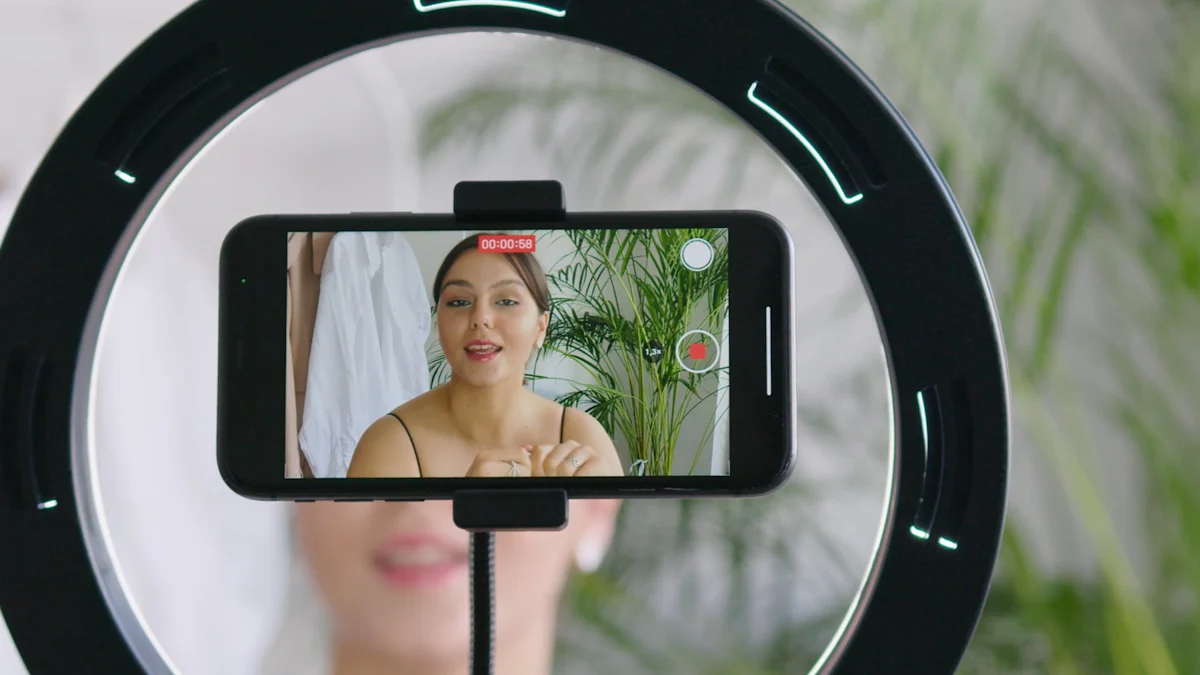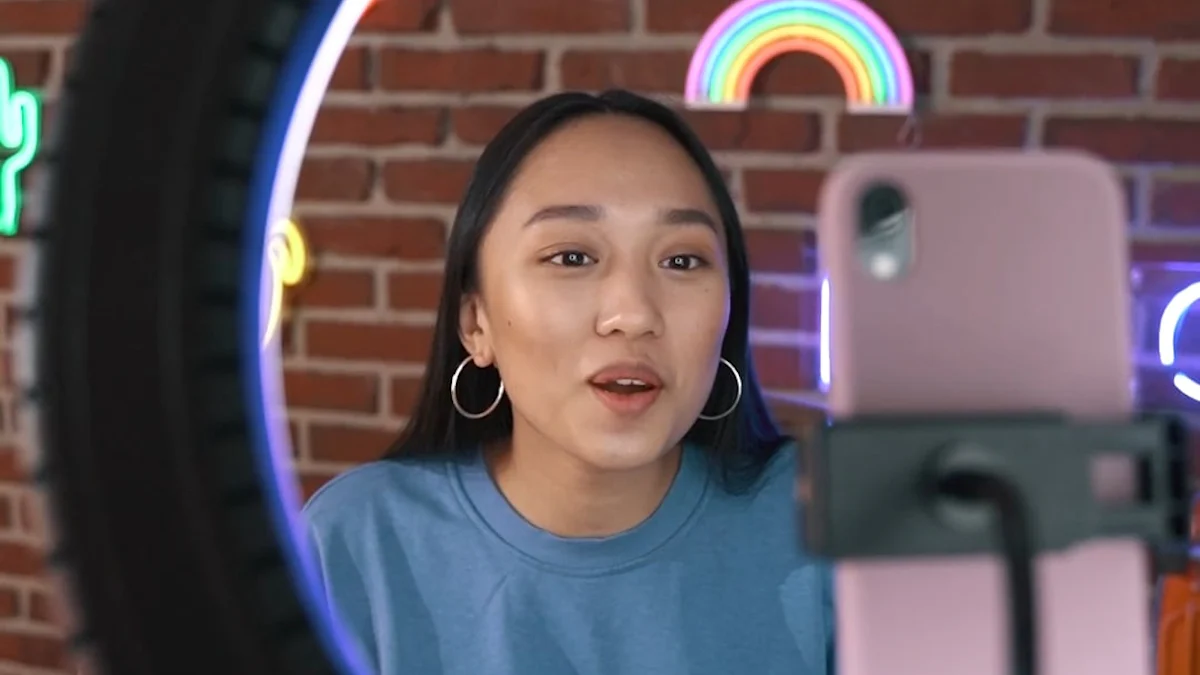Emerging Trends in Social Media Influencers for 2025

Social media is evolving faster than ever, and staying ahead of the curve is no longer optional—it’s essential. In 2025, the hottest social media influencers are shaping not just trends but entire industries. Did you know influencer marketing spend is projected to hit $9.29 billion this year, with a 14.2% increase from 2024? That’s not just growth; it’s a movement. With over 50 million influencers worldwide and 2 million earning six figures annually, the competition is fierce, but the opportunities are endless. If you want to thrive in this dynamic space, understanding the latest influencer marketing trends is your first step.
The Rise of Authenticity and Transparency

Why Authenticity is Key for the Hottest Social Media Influencers
Authenticity isn’t just a buzzword anymore—it’s the backbone of successful influencer marketing. You’ve probably noticed that audiences today crave realness. They don’t just want polished photos or flashy ads; they want creators who feel relatable and genuine. This shift is especially important for Gen Z, who value transparency and trustworthiness above all else.
Here’s why authenticity matters:
- Consumers expect influencers to showcase more than just products. They want honest opinions and real-life experiences.
- Brands that focus on authenticity and trustworthiness connect better with their audiences.
- Trust plays a huge role in purchase decisions. In fact, 81% of consumers say trust is essential when choosing what to buy.
Take a look at these stats:
| Statistic | Description |
|---|---|
| 85% of influencers | Believe trust and authenticity are their greatest strengths. |
| 67% of marketers | Agree that authenticity is crucial for effective influencer partnerships. |
If you want to stay ahead of social media trends, focusing on authenticity is non-negotiable.
Building Trust Through Transparency
Transparency is the secret sauce for building trust. When influencers openly share their partnerships, struggles, or even failures, it creates a deeper connection with their followers. You’ve probably seen this in action—when influencers disclose sponsored posts or share behind-the-scenes content, it feels more honest, right?
This approach works because it aligns with what audiences expect. People are tired of overly curated content. They want to see the human side of influencers. By being transparent, influencers not only build trust but also strengthen their credibility.
For brands, this means partnering with influencers who prioritize openness. It’s not just about selling a product; it’s about creating a story that resonates.
Case Studies of Authentic Influencer Campaigns
Some of the most successful influencer campaigns have nailed authenticity and transparency. For example:
- Mindful Chef: This UK-based brand partnered with influencers who genuinely care about wellness. Their campaigns featured heartfelt testimonials, which resonated with health-conscious consumers.
- Nature’s Bounty: This collaboration involved influencers distributing health supplement samples to their followers. The campaign’s focus on wellness and honest reviews made it a hit.
These examples show how authenticity can drive engagement and build lasting relationships. If you’re looking to tap into the hottest social media influencers, take notes from these campaigns.
Long-Form Content and Content Experimentation
The Comeback of Long-Form Content in Social Media Trends
Long-form content is making a big comeback in social media trends. You might have noticed platforms like TikTok and Instagram increasing the maximum length of videos. This shift isn’t random. People are craving more detailed information and meaningful storytelling.
Here’s how this trend has evolved:
- Short videos dominated platforms like Vine and TikTok in the past.
- By 2023, users started seeking deeper engagement, leading to a rise in longer videos.
- Platforms began rewarding creators who produce extended content, showing a clear change in user preferences.
Why does this matter? Long-form video content allows influencers to dive deeper into topics. Whether it’s a product review, a tutorial, or a personal story, longer videos give creators the space to connect with their audience on a more meaningful level.
Tip: If you’re an influencer, consider experimenting with longer videos. They’re perfect for building trust and showcasing your expertise.
Experimenting with New Content Formats
Social media is all about keeping things fresh. Experimenting with new content formats can help you stand out. Think about it—when was the last time you saw something truly unique on your feed?
Here are some ideas to try:
- Interactive videos: Add polls, quizzes, or clickable elements to engage your audience.
- 360-degree videos: Let your followers explore a scene from every angle.
- Live streams: Go live to connect with your audience in real time.
Trying new formats isn’t just fun; it’s also a great way to see what resonates with your followers. Don’t be afraid to take risks. Sometimes, the most unexpected ideas lead to the biggest wins.
Platforms Supporting Long-Form Content in 2025
By 2025, platforms like TikTok, Instagram, and YouTube will continue to push long-form content. These platforms are already enhancing their algorithms to favor extended videos. Why? Because users want more than just quick entertainment. They’re looking for detailed product demos, in-depth tutorials, and compelling brand stories.
If you’re planning your next campaign, think about how these platforms can support your goals. YouTube is perfect for tutorials, while Instagram’s Reels and TikTok’s extended videos are great for storytelling.
Note: Long-form content isn’t just a trend. It’s a powerful tool for influencers and brands to build stronger connections with their audiences.
Social Commerce and Full-Funnel Strategies
The Role of Influencers in Social Commerce
The rise of social commerce has transformed how people shop online, and influencers are at the heart of this shift. Their ability to connect with followers on a personal level makes their recommendations feel like advice from a trusted friend. This connection drives purchasing decisions in ways traditional ads can’t.
Influencers connect with their followers on a personal level, making their product recommendations feel like advice from a friend. This personal endorsement can significantly influence purchasing decisions.
Here’s why influencers are so effective in social commerce:
- They build trust with their followers, making product endorsements feel genuine.
- Through storytelling, they show how products fit into everyday life.
- They tap into niche communities, helping brands reach specific audiences.
For example, a fitness influencer showcasing workout gear on Instagram can quickly turn followers into buyers. Their personal touch makes the product feel relatable and desirable.
Adopting Full-Funnel Strategies in Influencer Marketing
To succeed in influencer marketing, you need to think beyond just awareness. Full-funnel strategies help you guide potential customers from discovery to purchase. Influencers play a key role at every stage of this journey.
- At the top of the funnel, influencers create awareness by introducing your brand to their audience.
- In the middle, they nurture leads by sharing detailed reviews or tutorials.
- At the bottom, they drive conversions with exclusive discounts or limited-time offers.
Dunkin' Donuts nailed this approach with their collaboration with Charli D’Amelio. By co-creating special edition drinks, they generated massive awareness and boosted sales in record time.
Tips for Creating High-Impact Social Commerce Campaigns
Want to make your social commerce campaigns stand out? Here are some tips:
- Choose the right influencers: Look for creators who align with your brand values and target audience.
- Leverage storytelling: Encourage influencers to share authentic stories about your product.
- Incorporate exclusivity: Offer unique discounts or early access to create urgency.
- Track performance: Use analytics tools to measure ROI and refine your strategy.
Social commerce is more than a trend—it’s a game-changer. By partnering with the hottest social media influencers and adopting full-funnel strategies, you can turn followers into loyal customers.
The Growth of Nano and Micro-Influencers

Why Nano and Micro-Influencers Are the Future of Influencer Marketing
Nano and micro-influencers are taking the spotlight in the creator economy. These smaller-scale creators might not have millions of followers, but they bring something even more valuable—authenticity and trustworthiness. Their audiences see them as relatable and approachable, which makes their recommendations feel genuine.
Here’s why they’re the future:
- Micro-influencers make up 47.3% of all influencers, showing their growing dominance in the industry.
- Nano-influencers boast the highest engagement rate at 2.19%, outperforming even the hottest social media influencers with massive followings.
For brands, this means a golden opportunity to connect with niche communities. Gen Z, in particular, values real connections over flashy numbers. By working with nano and micro-influencers, you can tap into this trend and build meaningful relationships with your audience.
Benefits of Partnering with Smaller Influencers
Collaborating with nano and micro-influencers offers unique advantages that larger creators can’t always provide.
| Benefit | Description |
|---|---|
| Access to Untapped Audiences | Collaborating with nano-influencers allows brands to reach unique, often untapped audiences. |
| Cost-Effectiveness | Nano-influencers present a more affordable option compared to larger influencers. |
| Higher Engagement Rates | Their followers are highly engaged, leading to better conversion rates. |
| Meaningful Connections | They foster genuine relationships that can drive brand growth. |
Smaller influencers also excel at creating user-generated content (UGC). Their followers trust their opinions, which makes their UGC feel more authentic. Plus, they’re cost-effective, making them ideal for brands with limited budgets.
Strategies for Identifying and Collaborating with Nano and Micro-Influencers
Finding the right influencers doesn’t have to be complicated. Start by looking for creators who align with your brand values and target audience. Tools like social listening platforms can help you identify influencers who are already talking about your industry.
Here are some tips to get started:
- Look for niche communities: Nano and micro-influencers often have highly specific audiences. This makes their content more targeted and effective.
- Engage directly: Reach out to creators with a personalized message. Show them you value their work.
- Focus on long-term partnerships: Building ongoing relationships with influencers fosters trust and leads to better results.
By collaborating with these smaller creators, you can create campaigns that feel personal and relatable. Whether it’s through video content or UGC, nano and micro-influencers can help you connect with your audience in a way that feels real.
AI and Technology Shaping Influencer Marketing Trends
AI-Powered Influencer Selection and Campaign Optimization
AI is revolutionizing how you approach influencer marketing. It’s no longer about guesswork or manual research. With AI, you can pinpoint the perfect influencers and optimize campaigns for maximum impact.
Here’s how AI is transforming the game:
- It dives deep into psychographic analysis, helping you understand audience values and preferences.
- AI tools analyze user behavior to tailor campaigns that resonate with your audience.
- Real-time adjustments ensure your campaigns stay effective, boosting engagement and ROI.
Pro Tip: Use AI to automate repetitive tasks like ad creation and performance tracking. This saves time and lets you focus on strategy.
Take a look at some AI-driven strategies:
| Strategy | Description |
|---|---|
| Real-time adjustments | AI tracks metrics like engagement and conversions, allowing you to tweak campaigns instantly. |
| Audience segmentation | It categorizes audiences by age, location, and interests for precise targeting. |
| Predictive analytics | AI forecasts trends, helping you stay ahead of the curve. |
| Automation of adjustments | It adjusts budgets and content distribution based on performance data. |
| Monitoring key performance | AI tools track KPIs in real-time, identifying areas for improvement. |
By leveraging these tools, you can create campaigns that feel personal and deliver results.
Generative AI in Content Creation: Opportunities and Challenges
Generative AI is opening up new possibilities for creators. It can help you produce high-quality video content, captions, and even user-generated content (UGC) in record time. Imagine having AI draft scripts or edit videos while you focus on creativity.
But it’s not all smooth sailing. While AI can speed up content creation, it can also lead to challenges. Over-reliance on AI might make your content feel less authentic. Audiences value the human touch, and too much automation could hurt your connection with them.
Note: Use generative AI as a tool, not a replacement. Combine its efficiency with your unique voice to stand out in the creator economy.
Ethical Considerations in Using AI for Influencer Marketing
AI brings incredible opportunities, but it also raises ethical concerns. Tools that retouch photos or enhance appearances can create unrealistic beauty standards. When influencers use these tools excessively, it can harm their followers’ self-esteem and trust.
For example, doctored photos often pressure audiences to chase unattainable ideals. This can lead to body-image issues and lower confidence. As a brand or influencer, you have a responsibility to prioritize authenticity.
Reminder: Transparency matters. If you use AI tools, let your audience know. Honesty builds trust and strengthens your relationship with followers.
AI is shaping influencer marketing trends in exciting ways. By using it responsibly, you can stay ahead while maintaining authenticity and trust.
Data-Driven Strategies and Social Listening
The Importance of Analytics in Influencer Marketing Trends
Analytics is your secret weapon in influencer marketing. It helps you understand what’s working and what’s not. By tracking key metrics like engagement rates, click-throughs, and conversions, you can fine-tune your campaigns for better results.
In 2025, analytics tools are smarter than ever. They don’t just show you numbers—they give you actionable insights. For example, you can see which influencers drive the most sales or which content formats resonate with your audience. This data helps you make informed decisions and stay ahead of influencer marketing trends.
Tip: Don’t just look at vanity metrics like likes or shares. Focus on deeper insights like audience demographics and purchasing behavior. These details can make or break your campaign.
Social Listening for Better Audience Insights
Social listening is like having a crystal ball for your audience. It lets you monitor what people are saying about your brand, your competitors, and even your industry. This information is gold for influencer campaigns.
Here’s how social listening can help:
- It shows you public sentiment about your brand, so you can address concerns before they escalate.
- It highlights trending topics, helping you collaborate with influencers who align with your audience’s interests.
- It improves your targeting by revealing what your audience truly cares about.
When you know what your audience wants, you can create campaigns that feel personal and relevant. This approach boosts engagement and strengthens your brand’s connection with its followers.
Tools for Measuring ROI and Campaign Success in 2025
The right tools make all the difference. In 2025, platforms like insightIQ and Aspire offer end-to-end solutions for influencer marketing. They help you find creators, track campaigns, and measure ROI—all in one place.
Here are some tools you should check out:
- insightIQ: Tracks campaigns and provides detailed reporting.
- Aspire: Covers everything from influencer search to ROI measurement.
- affable.ai: Offers extensive influencer data and campaign tracking.
- Captiv8: A comprehensive tool for managing influencer campaigns.
- Heepsy: Great for finding creators on Instagram and TikTok.
These tools simplify the process and give you the data you need to succeed. By using them, you can measure your campaign’s impact and refine your strategy for even better results.
Reminder: Always track your ROI. It’s the best way to prove the value of your influencer marketing efforts and secure future budgets.
Emerging Platforms and Co-Creation
Exploring New Platforms Like Bluesky for Influencer Marketing
New platforms are shaking up the influencer marketing world, and you’ll want to keep an eye on them. Bluesky, a decentralized social media platform, is gaining attention for its focus on user control and privacy. It’s perfect for influencers who value authenticity and want to connect with audiences in a more personal way.
But Bluesky isn’t the only one making waves. Other platforms are also gaining traction:
- Twitch is thriving thanks to its interactive live-streaming format. It’s a goldmine for gaming and tech brands looking to engage younger, tech-savvy audiences.
- LinkedIn is becoming a hotspot for B2B campaigns. Thought leaders and creators are using it to share insights that resonate with decision-makers.
These platforms offer unique opportunities to reach niche audiences. If you’re looking to stay ahead of trends, exploring these emerging spaces could give you a competitive edge.
The Rise of Co-Creating Campaigns with Influencers
Co-creation is the future of influencer marketing. Instead of just sponsoring posts, brands are teaming up with influencers to create content that feels authentic and engaging. This approach works because it combines your brand’s vision with the influencer’s creativity and audience insights.
Take Fenty Beauty, for example. They sent PR packages to influencers of all skin tones, encouraging honest reviews. This campaign not only boosted sales but also cemented their reputation for inclusivity. Dunkin’ Donuts also nailed co-creation by collaborating with Charli D’Amelio to launch special edition drinks. The result? Hundreds of thousands of sales in just five days.
When you co-create, you’re not just promoting a product—you’re building a story that resonates with your audience.
Building Creative Partnerships with Influencers
Strong partnerships with influencers can take your campaigns to the next level. The key is to treat these collaborations as true partnerships, not just transactions. When you involve influencers in the creative process, you tap into their unique perspectives and connect with their followers on a deeper level.
Here’s how you can build successful partnerships:
- Start by choosing influencers who align with your brand values.
- Give them creative freedom. Trust their expertise—they know what their audience loves.
- Focus on long-term relationships. Consistent collaborations build trust and deliver better results over time.
Creative partnerships aren’t just about selling products. They’re about creating memorable experiences that leave a lasting impression.
The social media influencer world in 2025 will revolve around authenticity, innovation, and technology. To stay competitive, you’ll need to embrace these trends and adapt your strategies. Consumers crave genuine connections, so focus on creating relatable content and engaging with your audience. Did you know 68% of consumers prefer content that feels real? That’s your cue to prioritize authenticity in every campaign.
Here’s how you can thrive:
- Partner with diverse creators to tap into the growing creator economy.
- Use market research to understand your audience and refine your approach.
- Stay active on emerging platforms and experiment with co-creation.
By leveraging these strategies, you’ll not only keep up but lead the way in the ever-changing social media space.
FAQ
What are the top influencer marketing predictions for 2025?
You’ll see a focus on authenticity, nano-influencers, and co-creation. Platforms like TikTok and Instagram will continue to dominate, while emerging platforms like Bluesky gain traction. AI will also play a bigger role in influencer strategies and campaign optimization.
How can you improve influencer campaign performance?
Track key metrics like engagement rates and conversions. Use tools like Aspire or insightIQ to analyze data. Experiment with short-form and long-form content on platforms like YouTube and TikTok. Always refine your influencer strategy based on audience feedback.
Is short-form content still relevant in 2025?
Absolutely! Short-form content remains a favorite for quick, engaging storytelling. Posting on TikTok or Instagram Reels can boost social media engagement. However, trends in social media also show a growing demand for long-form content, so balance both formats.
What’s the best platform for influencer marketing in 2025?
It depends on your goals. TikTok is great for short-form videos and viral trends. Instagram excels in visual storytelling and shopping features. YouTube is ideal for detailed tutorials and reviews. Explore new platforms like Bluesky for niche audiences.
How do you choose the right influencers for your brand?
Look for influencers who align with your values and target audience. Nano and micro-influencers often have higher engagement rates. Use AI tools to analyze their audience demographics and ensure their content matches your influencer strategy.
See Also
Key Influencer Marketing Trends You Should Follow in 2024
15 Essential Influencer Marketing Platforms for 2024 Success
Effective TikTok Influencer Marketing Techniques for 2024
